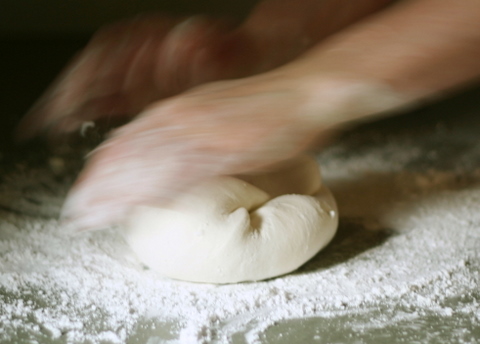If you are into cakes or love cakes decoration, then you have found the right post. This article is the full breakdown of everything you need to know about fondant, especially in Nigeria.
What is fondant icing
Fondant is a type of icing, which has a texture separate from other icings that make it unique. Fondant comes in of different forms, with rolled or poured being the most popular, though poured fondant is less common. Fondant is typically made with sugar, liquid glucose or corn syrup, water, gelatin or glycerin. It is 100% edible.
Uses of fondant icing
Fondant icing is mostly used in the decoration or sculpting of pastries, cupcakes and cakes. It is very useful in making luxury cakes, as it is more versatile in making elaborate and creative designs than regular icing.
It also protects cakes from going bad, keeping cakes yummy and fresh when refrigerated, as it gets hard when it is cold.
Step by step guide for making fondant icing
Ingredients
- 750 grams of icing sugar
- 2 tablespoons of gelatin
- 1/3 cup of very hot water
- 4 tablespoons of liquid glucose
- 1 tablespoon CMC (Carboxy Methyl Cellulose) or gum tex (optional but highly recommended)
- 1 tablespoon of desired flavouring (Optional)
- 1 tablespoon of Butter or Shortening (for rolling and kneading)
(In case you want to make a bigger quantity of fondant, you can double this recipe)
- First start by measuring out 750 grams of your icing sugar then afterwards sieve it into a bowl. The reason why is to make sure there are no lumps or unwanted particles in the icing sugar.
- Pour the cup of hot water into the bowl. Make sure the water is very hot.
- After pouring in the hot water into the bowl, it is now time for me to add two level tablespoons of gelatin. Stir to make sure that the whole gelatin dissolves. If you want a tinted fondant, add the coloring to the gelatin mixture now as it’s easier than kneading in colour later.
- It now is time for me to add four tablespoons of liquid glucose. Mix everything together. Now, add the flavouring (if you want to use it) and mix well.
- After mixing everything together, it’s now time for me to start adding icing sugar. Please note you have to add your icing sugar gradually bit by bit. Don’t pour all at once into the mixture.
- Keep doing this till the mixture stops sticking to the hands. You may need to add more icing sugar to kind of bring everything together. Continue till you can be able to form a fondant bowl with it. Now the fondant is say 95 percent ready.

Kneading a fondant
- When the fondant is no longer sticking to my hands, it’s time to remove it from the bowl and put it on my work surface. At this stage, add just one teaspoon of CMC to strengthen the fondant so that it will be firm while kneading and not sweat in humid climate
- Rub some butter or shortening on your hands and knead the fondant and try to make it smooth and pliable
- Put the fondant in a Ziploc tightly wrapped nylon bag then store it for some hours just to make it rest and for it to get matured. This is because at times if it is used immediately after four minutes, one might experience a sweaty fondant
How do you make fondant icing for cakes?
To make fondant icing, you can mix gelatin and cold water, and heat until the gelatin dissolves. Add the corn syrup or liquid glucose and mix it well, then add the shortening and flavouring. Mix this into a bowl of sugar, and keep kneading the dough and adding more sugar until it gives the right texture.
What ingredients are in fondant?
It’s made primarily from icing sugar, gelatin, liquid glucose or sugar syrup, and water with glycerin added to make it flexible and moldable.
How do I cover a cake with fondant in Nigeria?
First, measure the cake, so you’ll know the size of fondant to roll. For example, if you have a round 16 inch wide cake with 4 inch height, the fondant measurement will be 16+4+4, which gives 24 inches. As it’s better to have extra fondant at the edges, than not having enough, a 26 inches fondant will be adequate.
Next, frost the cake smooth with a thin layer of buttercream. Leave it a while to harden, to ensure a nice, clean finish to your fondant cake by preventing any imperfections on the cake poking through the fondant.
Use butter or sugar to lightly dust the surface. Then roll out the fondant using either a fondant roller or rolling pin. Roll until the desired thickness is achieved and even. It is advisable to constantly turn it about a quarter of the way after every roll to achieve this.
Now, carefully fold up the rolled fondant on the rolling pin and carefully lift it up onto the cake. Once covered, work fast to smooth out the fondant at the top and sides.
Lastly, a knife should be used to cut of the excess fondant on the base of your cake.
Is it cheaper to buy or make fondant?
It is generally cheaper to make one’s fondant than to buy from manufacturers. Also, fondants made by baker generally taste better and made to one’s unique taste.
What kind of fondant do professionals use?
Many professionals use various brands of commercially available fondant, especially most celebrity pastry chefs and reality TV cake decorators. This may be due to their ready availability while pressed for time.

Cake with fondant decorations
Why does fondant taste bad?
The biggest issue with fondant taste is that many people do not roll it thin enough. If it is too thick, it tends to give a rubbery taste. Spreading buttercream icing on the cake before rolling the fondant very thin to cover also allows the fondant to absorb the flavour of the icing.
Also, making the fondant rather than buying it improves the taste of fondant. This also allows one flexibility to play with different flavours and thickness
What can I substitute for glycerin in fondant?
Vegetable oil is an acceptable substitute for glycerin in fondant as it does the job that glycerin does well. However, it should be noted that it lacks the sweetness, creamier texture and sweeter taste of glycerin.
How do you make fondant rolls from scratch?
Place icing sugar in a bowl, then add glucose syrup and egg white it. You can add flavours this stage. Mix until it is too thick to mix, then gently knead it in the bowl.
Rub your hands with a little shortening to prevent sticking and knead the fondant until it’s pliable. Add food coloring if you’re planning to tint your fondant now. If your fondant dries out and cracks, rub a little vegetable shortening along the dry area until the crack disappears.
How long does fondant last?
Sugar is the main ingredient in fondant; therefore, it works as a natural preservative. Stored away from heat and sunlight in a cool dry place, fondant lasts for up to 4 weeks at room temperature.
It can also be kept for up to six months in the fridge and up to 2 years in the freezer. This can only be achieved however, if fondant is wrapped well in cling wrap first, placed it in a ziplock bag, and then in an airtight container to prevent it from drying out.
How do you roll the perfect fondant?
First, you need to dust your flat working surface, hand and rolling pin with sugar or corn-starch. Also, ensure that your fondant is at room temperature, so if it was in the fridge, bring it out long before working on it.
Since the goal is to roll the fondant into a compact solid disk, ensure that you spin the fondant around as it being kneaded. A thickness of less than 1 cm is okay, except when fondant is to mold decorative objects like flowers. Use rolling pin as an aid in transferring to the cake and a sharp knife to trim the excess fondant.
NOTE: Never use water to fix cracks in fondant as it will affect the sugar. Use vegetable shortening to fix and achieve extra polished look.
How do you make fondant smooth?
To smooth out fondant on the cake, use leftover fondant dough shaped into a ball or your hand after dipping is corn-starch or sugar. One can also use a piece of thick foam to achieve a smooth finish.
If the fondant cracks easily then it is too thick and the crack should be covered by crack by spreading the fondant over and smoothing it out. To prevent from drying out, unused fondant should be kept tightly wrapped in plastic.
How do you make fondant shiny?
Steam, egg white, vodka and confectioner’s glaze are some of the methods used to add a shiny finish to fondant.
Using a hand-held steamer, on can get an instant gloss on the cake but it has to be used with care as it can cause melting. Eggs whites are a also great way to achieve a shiny quick fix of fondant as they usually dry within 2 hours.
For high gloss finish, Add 1 part vodka, and 1 part liquid glucose or corn syrup. Use a brush to paint a thin layer of this mixture on the fondant cake. Leave it to dry overnight. Confectioner’s glaze is the easiest product to use as it comes in a spray can that just needs to be sprayed on the cake.
Why is my fondant shiny?
Since sugar is the main ingredient in fondant, water causes it to shine, then melt. The more humid the climate is, the more likely the sugars in your fondant will start to melt.
At first the fondant gets soft and sticky, then it gets really shiny, and then starts to ‘sweat’. To prevent this, especially in humid areas, add a bit of CMC to firm up the fondant.
Can you put water on fondant?
Do not use water on fondant as it will dissolve it. Though fondant hardens and dries up quickly when it is exposed to air, depending on the humidity and the air temperature, adding water will mess the whole thing up. Instead, knead it gently with your hands/fingers dipped in shortening and the warmth will make it smooth again.
Can I use vegetable oil instead of shortening for fondant?
Yes, vegetable oil can be used instead of shortening for fondant as it holds up well when rolled or shaped by hand, and change flavours when not refrigerated. The only issue with using hydrogenated vegetable oil in fondant is its high melting point which makes it may leave an oily sensation in the mouth.
Writer, photographer and physicist, ‘Yemi loves reading, football and searching for the interconnectedness of things.

